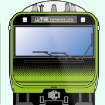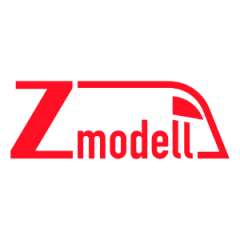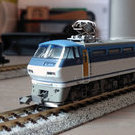Search the Community
Showing results for tags 'decoder'.
-
 Hi everyone. I’m working on a new open wireless platform to control trains, layout accessories (signals, level crossing), and any movable vehicles on a layout. I call it WCC (wireless command control). Every decoder communicates with other decoders over the air that’s why you need just plug DC power into your layout. No command stations and boosters are required - just install a decoder inside a train or connect a decoder to a signal, open a browser on your laptop or mobile device and you can already control your layout. DCC is still can be used in case you already have a layout with DCC. I would like to get your feedback, and ideas to know what features should be included at the beginning and what later. The protocol will be fully open with code examples so users who like to code can develop their own decoders and controllers. WCC decoders will be available from December 2023 - January 2024, documentation about the protocol with code examples on Arduino and how to develop your own decoder will be available in December as well. Below you can find more details about how it works, a schematic, and a photo of a decoder prototype - production candidate (currently the size is 11 x 39mm, after we release the main version, we'll add special versions for Kato). Also, you can get more info at https://loco.engineering Main features - Two-way wireless communication between all decoders - trains, cars, and layout elements "talk" with each other - Decoder functions, CV, settings, and logic can be changed directly from a web browser - No boosters, additional wiring, command stations, and CV programming required - Can run on DC, AC tracks, and a battery - Detect train location and add complex interactions with NFC tags (for scale N NFC tags (5 mm x 5 mm) should be placed on a train, and readers (small circuits) should be placed under rails) - No vendor lock-in anymore - WCC is an open protocol with clean documentation, code, and hardware examples for Arduino - Loco.Engineering decoders can be used with classic DCC systems, so you can buy one decoder and try it on your current layout - OEM and the white-label app even for small model train manufacturers - The easiest and probably cheapest way to convert your DC layout to the interactive layout - Over-the-air sound and firmware updates - you shouldn’t remove the train case to update sounds and firmware - Everyone is able to create custom controls and throttles - Low-cost - sound decoders cost €50 or $55. You don't need any additional tools to control decoders or to program them. - Designed, developed, and produced in our workshop. Zero outsourcing and full control of development help us to deliver updates and new features very often. - Updates and new features every week, fast friendly support Feel free to leave feedback here or contact at hey@loco.engineering Project's website: https://loco.engineering
Hi everyone. I’m working on a new open wireless platform to control trains, layout accessories (signals, level crossing), and any movable vehicles on a layout. I call it WCC (wireless command control). Every decoder communicates with other decoders over the air that’s why you need just plug DC power into your layout. No command stations and boosters are required - just install a decoder inside a train or connect a decoder to a signal, open a browser on your laptop or mobile device and you can already control your layout. DCC is still can be used in case you already have a layout with DCC. I would like to get your feedback, and ideas to know what features should be included at the beginning and what later. The protocol will be fully open with code examples so users who like to code can develop their own decoders and controllers. WCC decoders will be available from December 2023 - January 2024, documentation about the protocol with code examples on Arduino and how to develop your own decoder will be available in December as well. Below you can find more details about how it works, a schematic, and a photo of a decoder prototype - production candidate (currently the size is 11 x 39mm, after we release the main version, we'll add special versions for Kato). Also, you can get more info at https://loco.engineering Main features - Two-way wireless communication between all decoders - trains, cars, and layout elements "talk" with each other - Decoder functions, CV, settings, and logic can be changed directly from a web browser - No boosters, additional wiring, command stations, and CV programming required - Can run on DC, AC tracks, and a battery - Detect train location and add complex interactions with NFC tags (for scale N NFC tags (5 mm x 5 mm) should be placed on a train, and readers (small circuits) should be placed under rails) - No vendor lock-in anymore - WCC is an open protocol with clean documentation, code, and hardware examples for Arduino - Loco.Engineering decoders can be used with classic DCC systems, so you can buy one decoder and try it on your current layout - OEM and the white-label app even for small model train manufacturers - The easiest and probably cheapest way to convert your DC layout to the interactive layout - Over-the-air sound and firmware updates - you shouldn’t remove the train case to update sounds and firmware - Everyone is able to create custom controls and throttles - Low-cost - sound decoders cost €50 or $55. You don't need any additional tools to control decoders or to program them. - Designed, developed, and produced in our workshop. Zero outsourcing and full control of development help us to deliver updates and new features very often. - Updates and new features every week, fast friendly support Feel free to leave feedback here or contact at hey@loco.engineering Project's website: https://loco.engineering- 2 replies
-
- 3
-

-
- dcc
- automation
-
(and 2 more)
Tagged with:
-
Warmest Christmas greetings to everyone, This is my first post on this forum, so let me introduce myself. My name is Alex, I am from Kyiv, Ukraine. I had to move to Germany after the war began in my native country. I am collector of Z scale models since 2006 and manufacturer of small series products like train models, digital decoders, load inserts and accessories for Z scale 1:220 under my own brand Zmodell since 2016. Here is my Facebook page: https://www.facebook.com/Zmodelltrains I am also a member of Z scale International Forum (Germany) and AZL forum (USA): https://f.z-freunde-international.de/memberlist.php?mode=viewprofile&u=1508 https://azlforum.com/user/565 I am also a member of Trainini Team - German online magazine about Z scale model trains: https://www.trainini.de/team And of course, I am a big fan of Japanese Railways and owner of one of the biggest collections of Z scale 1:220 Japanese trains in Europe. My collection counts numerous models from such manufacturers as Rokuhan, Tenshodo, Prmloco, Platz/F-Toys, ZJ Gauge, Akia and others. In 2019, I started developing my own digital decoders based on Doehler & Haass and ESU technology - solely for the needs of Z scale models from Märklin and AZL. In this report I would like to introduce my next development – sound decoder for Rokuhan trains. After successful development of the sound board for Z scale Marklin V320 diesel locomotive (Art. No. 88320 and 81320), based on the newest and the smallest sound decoder from ESU – LokSound 5 Nano, many new possibilities of equipping Z scale models with sound features became clear to me. Report about my sound decoder for V320 locomotive can be found here: https://www.facebook.com/100063508513124/posts/pfbid0hbX6d949KEs1mwF76HsiNUcmNHzTmvsr15bAkAJEPV3oWgp7urmzMiq2BeMihWVZl/ One of decisive factors that brought me to the idea of developing something for Japanese trains became the availability of prototypical sound projects for ESU sound decoders created and provided for free non-commercial usage by Desktopstation.net – Japanese provider of open-source DCC hardware and software that supports and sponsors creating of prototypical sound projects by railway enthusiasts in Japan. The list of sound projects is available here: https://desktopstation.net/sounds/list_eng.html While multiple unit trains is not the strongest category in Märklin’s product line, it is a major part of the whole lineup of Rokuhan rolling stock products. Furthermore, Rokuhan already showed, let me say, more progressive way of thinking in comparison to Märklin in terms of introducing digital control to Z scale. Digital command station and a number of different digital decoders for rolling stock and accessories already exist in Rokuhan’s product line. I have to admit that these products are not ideal in their current generation (especially in comparison to modern competitive products from German manufacturers), but they fit quite well within the needs of railway hobbyists in Japan, and in any case, it is better than nothing at all. One of the popular digital products of Rokuhan is a universal DCC board (Art. No. A059) that fits into all types of their passenger cars, cars of multiple unit trains and single running railcars (aka railbuses). A059 board features one good advantage: it actually combines two different devices together – locomotive decoder and function decoder for interior lighting. I fitted all Rokuhan trains in my own collection with these digital boards. As I have already mentioned above, availability of the prototypical sound project for Shinkansen 500 Series high-speed train and a number of other projects for Japanese trains existing in Z scale inspired me to start this development. And my idea was to develop a universal solution (just like A059 board from Rokuhan) which would fit into the maximum possible number of models. After making all necessary measurements of different train models, I developed the following specifications for my new digital sound board: - It will exist in two forms – long and short (corresponds to types A and D, according to Rokuhan’s specifications, see details here: https://www.rokuhan.com/products/wp-content/uploads/2022/01/A053_A059_DECODER_INSTRUCTION_MANUAL_E_f_18.4.10.pdf). Short form is derived by manual cutting off the long board; - Long form for will be suitable for the motor cars of Shinkansen 500 Series (Art. T013-x) and 0 Series (Art. T020-x) high-speed trains; - Short form will be suitable for the motor cars of the following trains: Tobu 500 Limited Express Train “Revaty” (Art. T034-x), JR 103 Series (Art. T022-x), JNR 113 Series (Art. T001-x, T003-x), JNR 115 Series (Art. T011-x) and JNR 415 Series (Art. T023-x) commuter trains. Very thin motor chassis and extremely silent driving gear are great advantages of Rokuhan trains which contributed for this development to become successful, too. The only train where it turned out to be impossible to fit the sound board is Shinkansen E6 Series – unfortunately, its cars are too small and offer too less available space inside. Also, my board is not compatible with Rokuhan’s Kiha 52 Series railcars due to the specific mounting requirements – different circuit board is needed for this type of the car. By the way, prototypical sound project for Kiha 52 is available at Desktopstation.net, too. I equipped my digital sound board with highly-effective energy storage module that has been already used in my sound decoder for V320 diesel locomotive and proved its efficiency. It is based on 2x 470 µF/16V Tantalum-Polymer capacitors and features overvoltage and thermal protection. I used the same type of the loudspeaker from V320 sound decoder – 15x8 mm model with only 1.5 mm thickness and 32Ω impedance. Luckily, ESU sound decoders support 32Ω speakers (unlike D&H models which require only 4-8Ω models). I prepared two different types of sound boxes – 1.5 mm and 2 mm thick. They are made from clear polystyrene on CNC cutting machine and airbrushed with clear lacquer in order to make them more transparent after CNC processing. Thick 2 mm soundbox is used in long sound board suitable to Shinkansen trains, while 1.5 mm one is used in short version suitable to everything else. I have to admit that I was very impressed by the quality of the sound and its loudness – all this was successfully achieved without any problems, despite very small size of the loudspeaker and soundbox. Choosing the right LEDs that would match the color temperature of the LEDs used in original Rokuhan A059 boards became a very challenging task. For some reason, Rokuhan uses cold white LED in their boards. I tested many different LEDs, and the only suitable model that provided nearly identical color temperature became white LEDs from Osram with 8200K color temperature. So, here are my new digital sound boards. This is the long version – with ESU LokSound 5 Nano sound decoder alongside and new E24 socket visible: And here is a comparison to Rokuhan A059 board cut off to the same size (Type D): The bottom side: You may notice that I used gold plating for my circuit boards, unlike Rokuhan. Also, I added “LV” and “LR” soldering pads for connecting headlights and tail lights connected in anti-parallel – for possible non-standard usage scenarios. And here is the short variant, derived from the long one by cutting: Comparison to Rokuhan A059 board (Type A): Here are the installation samples. Everything is pretty easy here – just like with original Rokuhan digital or analog boards. This is how the sound decoder looks when installed into the motor car of Shinkansen 500 Series high-speed train: Tobu 500 Limited Express Train “Revaty”: JR 103 Series commuter train: JNR 113/115/415 Series commuter train: I have prepared a series of videos demonstrating sound features of different Rokuhan trains equipped with my sound decoders. Once again, all sound projects for all shown trains are prototypical. Note: all non-motor cars in all trains shown in the following videos are fitted with Rokuhan A059 digital boards: Shinkansen 500 Series high-speed train: Tobu 500 Limited Express Train “Revaty”: JR 103 Series commuter train: JNR 113 Series commuter train: JNR 115 Series commuter train: Notice about Shinkansen 0 Series recently announced by Rokuhan: although my digital sound board is suitable for this train, no prototypical sound project available for it. And it is impossible to create it, since these trains are not in service since 2008. Nevertheless, I will try to dig into the subject a bit more and probably to find the closest matching sound project for this train, too. I will post an update here and add a demonstration video, too. Best regards, Alex, Zmodell
-

What DCC decoder is compatible with the Kato Yamanote Line E235 (N)
BulletTrain1805 posted a topic in DCC, Electrical & Automation
I am looking to buy a decoder for my E235 I have looked through multiple forums and not found a thing, does anybody know?- 18 replies
-
- yamanote line
- n scale
-
(and 3 more)
Tagged with:
-
Hi everyone! Wondering if anyone had experience in adding a decoder to the Kato EF65 1000 311? Thanks in advance! - Mauricio
-
Does anyone know of a good website with a list of Kato Japanese locomotives and their corresponding "drop-in" decoders. All the lists I can find are only for their NA models, but I know that many of the light boards used in NA models are also used in the Japanese models and therefore there are compatible decoders out there for many Japanese models as well. Thanks
-
Hi everybody Just get a KATO 10-387, may I install dcc decoder on it? if yes, which and how? Thanks




















